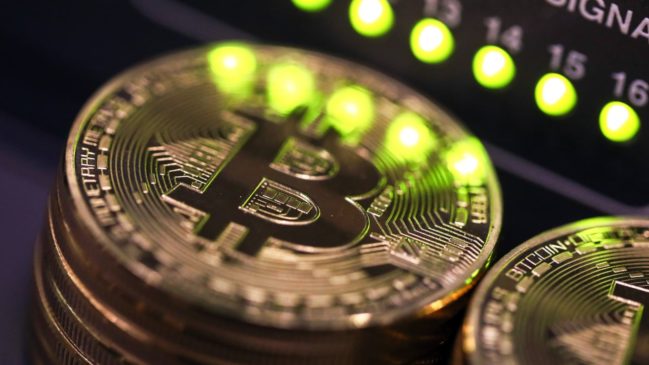Signs of miner capitulation are emerging as bitcoin continues to wrestle with the $70,000 level. According to data from CryptoQuant, the flow of bitcoin leaving miners wallets for exchanges – which indicates a selling event – reached a two-month high last weekend. Additionally, miner selling through over-the-counter desks saw its biggest daily volume since late March. “The miners are now competing for 450 bitcoin per day network wide versus 900 less than two months ago,” or post-halving , said Mike Colonnese, an analyst at H.C. Wainwright. “While rising transaction fees have helped offset some of this impact, mining economics have effectively fallen by 45% compared to pre-having levels so we’re not surprised to see some of this force selling in the market … as miners effectively look to cover operating expenses and to some extent capex with the proceeds of these bitcoin sales.” CryptoQuant shows the hourly transfer of bitcoin from miners to exchanges rose to more than 3,000 bitcoins on June 9. The next day, miners sold 1,200 bitcoins on OTC desks. The cryptocurrency’s price fell to as low as about $66,000 on June 11. Bitcoin has struggled to break through the $70,000 level since hitting its March 14 record of $73,797.68. “[The] selling has emerged in a context of low revenues after the halving,” said CryptoQuant’s head of research, Julio Moreno. “Daily bitcoin miner revenues stand today at about $35 million, down 55% from their 2024 peak reached in March.” That’s mostly as a result of “depressed” transaction fees, however, rather than the slashing of miners’ block reward at the halving. He said the Bitcoin network’s total daily transaction fees are more than 44% lower than they were pre-halving and that, even with record-high transactions on the network, the median transaction fee has remained low. On top of that, the Bitcoin network’s hash rate has barely declined since the April 19 halving, Moreno added. “This indicates that basically the same amount of computing power is competing for a decreasing amount of block rewards, putting additional pressure to miners’ profitability,” he said. Colonnese said the large publicly traded miners are in good shape after the halving. His top picks are CleanSpark and Iren , the former Iris Energy. “We estimate the group is currently generating north of 50% gross margins with bitcoin at $70,000, while we estimate the all-in cash cost to produce a bitcoin for the group is about $45,000 on average,” he said. “So the large listed miners have a good amount of breathing room.” CleanSpark is down 19% for the quarter, while Iren is up more than 140%. They’ve gained 55% and 82% for the year, respectively. “On the other hand, smaller bitcoin companies with less efficient fleets, higher power costs and less access to capital are really starting to feel the burn and could struggle to make it through the next few months unless bitcoin prices were to experience a significant price rally over the short term, which is currently not our base case,” he added.
Miners are selling their bitcoin as it struggles to hold onto $70,000



